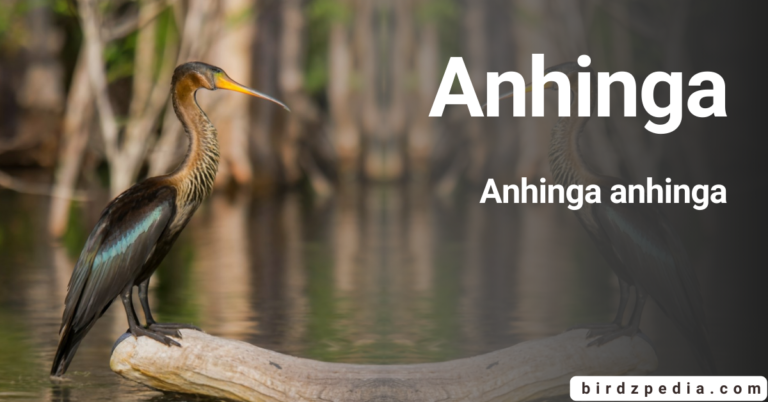Unveiling the INCA TERN [Larosterna inca]
Scientific Classification
| Kingdom | Phylum | Subphylum | Class | Order | Family | Genus | Species |
|---|---|---|---|---|---|---|---|
| Animalia | Chordata | Vertebrata | Aves | Charadriiformes | Laridae | Larosterna | Larosterna inca |
Inca tern
The subfamily Sterninae of the Laridae family, which includes terns, gulls, and skimmers, is where the Inca Tern (Larosterna inca) is classified as a Near Threatened bird species. Its range includes parts of Chile, Ecuador, and Peru, with sporadic reports from Hawaii and Central America.

Summary
- Scientific Name: Larosterna inca
- Habitat: Breeds from northern Peru to Valparaíso, Chile; primarily found in the Humboldt Current region.
- Migratory Status: Basically non-migratory, though some individuals move northward after mating.
- Feeding: mostly eats tiny fish, such as anchoveta, with planktonic crustaceans and offal as supplements.
- Behavior: Forms enormous swarms around fishing boats; pursues food sources, such as cormorants, sea lions, dolphins, and whales.
- Conservation Status: Climate change and human prey gathering put the species in danger of being Near Threatened.
- Breeding: Breeding season is not focused; nests at several locations and lays a clutch of two eggs on average.
- Incubation and Provisioning: Both sexes provide for the young and incubate the clutch.
- Fledging: occurs roughly four weeks after hatch; following fledging, babies are totally dependent on adults for at least a month.
- Distinctive Features: distinctive feathers, including a lighter throat, silky, satiny feathers along the neck, and a dark slate gray body. notable black tail with a significant fork and a white stripe extending from the base of the bill.
- Vocalization: At nesting colonies, they are the most vocal, making “raucous cackling notes” and a meowing call that sounds like a kitten’s.
Taxonomy
| Feature | Information |
|---|---|
| Scientific Name | Larosterna inca |
| Genus | Larosterna |
| Subspecies | None |
| Membership in Genus | Only member of genus Larosterna |

How Look like?
Description
The Larosterna inca is a bird with unusual plumage that ranges in length from 39 to 42 cm (15 to 17 in) and weight from 180 to 210 g (6.3 to 7.4 oz). The body of an adult is primarily slate gray, with a lighter throat and underwing coverts. Interestingly,
a prominent white stripe starts at the base of the beak and extends into long, satiny feathers on the side of the neck. Their wings’ trailing edges and the four outer primaries’ borders are also decorated with a striking white color. Its black, somewhat forked
tail adds to its stunning appearance overall. Brown irises, dark red legs and feet, and a dark red beak with exposed yellow skin at its base are further features. When they are young, their color is first purplish-brown and then gradually changes
to a variety of brownish-gray hues until they acquire their characteristic adult plumage. The color of the legs and bill of juveniles also changes; they begin as dark horn-colored and progressively take on the adult’s distinctive red color.
Distribution
Primarily a Humboldt Current bird, they breeds from Lobos de Tierra in northern Peru all the way south to the Aconcagua River near Valparaíso, Chile. Some move north into Ecuador following the mating season. It is also thought to be
a passing tourist in Panama and Costa Rica, and it has occasionally been reported as a vagrant in Guatemala and Hawaii. Notably, there is a recorded example of a person who wandered the islands from March to November.
The American Ornithological Society’s South American Classification Committee views the species’ existence in Colombia as speculative, despite the lack of official sighting reports.

Habitat
They chooses a variety of locations for its breeding grounds, including as sea cliffs, guano islands, and man-made features like ledges beneath piers and abandoned barges. Moreover, these birds have been observed congregating on sandy beaches among other seabirds, demonstrating their versatility in selecting breeding sites.
Behavior
Movement:
| Aspect | Information |
|---|---|
| Migratory Status | Essentially non-migratory |
| Dispersal after Breeding | Some individuals disperse north after breeding |
| Long-Distance Wanderings | Individuals have wandered great distances |
Food
They mostly consumes small fish, such as anchoveta, with planktonic crustaceans and offal as supplements. It follows whales, dolphins, sea lions, cormorants, and big flocks of birds that can number up to 5000 near fishing vessels.
The tern uses plunge-diving to capture prey, and it also uses perching or soaring to retrieve objects from the water’s surface. This flexible feeding pattern demonstrates the Larosterna inca adaptability to a variety of marine habitats.

Breeding
- Breeding season not concentrated; eggs found between April-July, October-December, and breeding noted in August.
- Nests in various sites including fissures, caves in rock cliffs, among rocks, boulders on island slopes, abandoned petrel and penguin burrows, and under human structures.
- Clutch size usually two eggs, occasionally one.
- Both sexes incubate and provide for the young.
- Incubation period unknown; fledging about four weeks after hatch; young fully dependent on adults for at least a month after fledging.
Vocalization
The Larosterna inca is most talkative in its colonies where it nests. Its sounds have been described as “raucous cackling notes” and “mewing,” the latter of which has been compared to a kitten’s cry.
Lifespan
Ages in the Wild: 12–14
20+ years in human care
Symbol of Health?
● A mustache on an Larosterna inca indicates its physical well-being. The bird is healthier if it has a longer moustache.

Common Names in Different Languages
| Language | Common Name |
|---|---|
| English | Inca Tern |
| Spanish | Gaviota Inca or Piquero Inca |
| French | Sterne inca |
| German | Inkaseeschwalbe or Inka-Seeschwalbe |
| Portuguese | Moleiro-inca or Gaivota-do-peru |
| Italian | Sterna inca |
| Dutch | Incastern |
| Russian | Инкская крачка (Inkskaya krachka) |
| Chinese (Simplified) | 印加燕鸥 (Yìnjiā yàn’ōu) |
| Japanese | インカアジサシ (Inka ajisashi) |
| Urdu | انکا ٹرن (Inca Tern) |
| Hindi | इंका टर्न (Inca Tern) |
is friendly or combative?
Because they enjoy each other’s company so much, the majority of Larosterna inca congregate in big colonies. However, if you question other birds, dolphins, and sea lions, they might be able to tell you—assuming they could speak—that the reason why they are violent is because they are kleptoparasitic.

FAQs
- What is the scientific name of the Inca Tern?
- The scientific name is Larosterna inca.
- Where is the natural habitat of their?
- They from northern Peru to Valparaíso, Chile, and is mostly found in the Humboldt Current region.
- Is they migratory bird?
- The Larosterna inca is mainly a non-migratory bird, though some may move northward after mating.
- How does they catch its prey?
- They uses plunge-diving to capture its prey, which is mainly tiny fish. It also uses its wings or perch to pluck objects from the water’s surface.
- What is the conservation status of the Larosterna inca?
- The IUCN has classified the Inca Tern as Near Threatened. Although its exact population size is unknown, it is thought to be declining because to pressures from both climate change and human prey gathering.
- When does the Larosterna inca breed, and where does it nest?
- They does not concentrate its breeding season in one particular season. It builds its nests in a variety of locations, such as abandoned burrows, island slopes, and cliff faces.
- How many eggs does they typically lay?
- The Larosterna inca typically lays two eggs in a clutch, although on rare occasions, it might only lay one.
- Do both male and female Larosterna inca participate in incubation and provisioning?
- Indeed, the Larosterna inca two sexes work together to care for the young and incubate the brood.
- How long are the young they dependent on adults after fledging?
- After fledging, young Larosterna inca rely entirely on adults for a minimum of one month.


![Toco Toucan[: Ramphastos toco] Overview, Habitat, Diet, Sounds](https://birdzpedia.com/wp-content/uploads/2023/12/Toco-Openbill-768x402.png)
![Discovering The Indian cormorant[Phalacrocorax fuscicollis]](https://birdzpedia.com/wp-content/uploads/2024/01/Indian-cormorant-768x402.jpg)
![Unique Discoveries of the Flightless Cormorant [Nannopterum Harrisi]](https://birdzpedia.com/wp-content/uploads/2024/01/Flightless-Tocuan-768x402.jpg)
![Red-Breasted Toucan: [Ramphastos dicolorus] A Symphony of Colors](https://birdzpedia.com/wp-content/uploads/2024/01/Red-breasted-Toucan-768x402.png)

